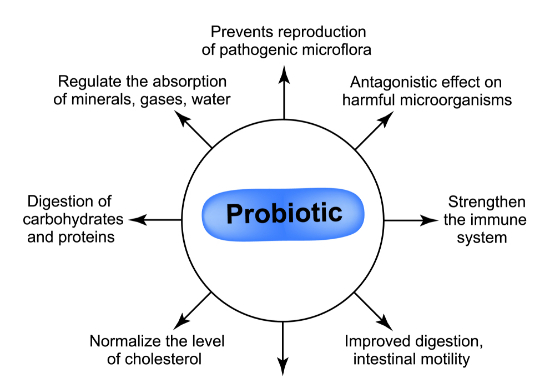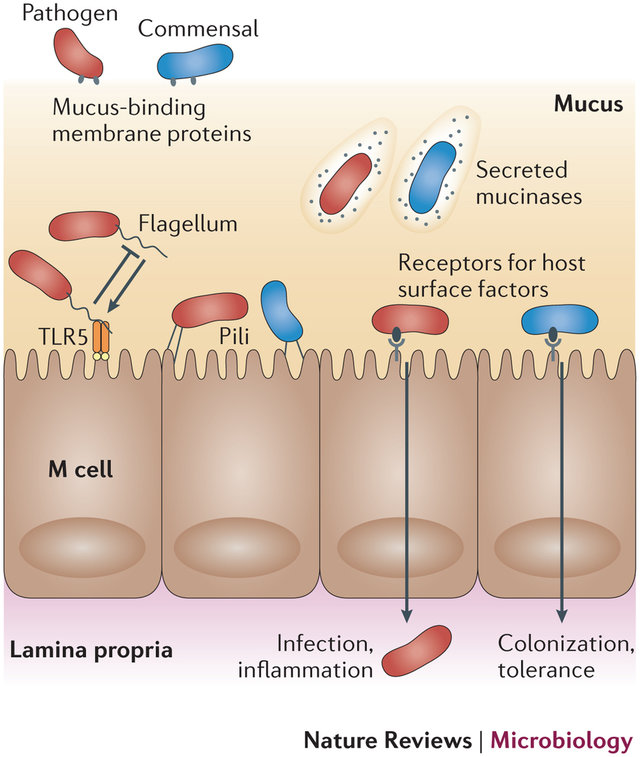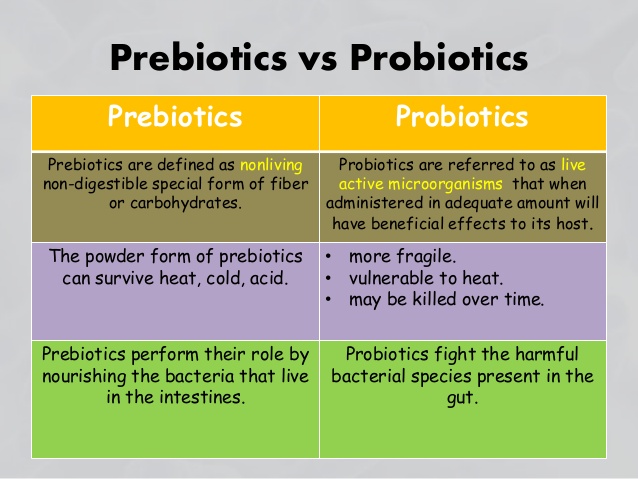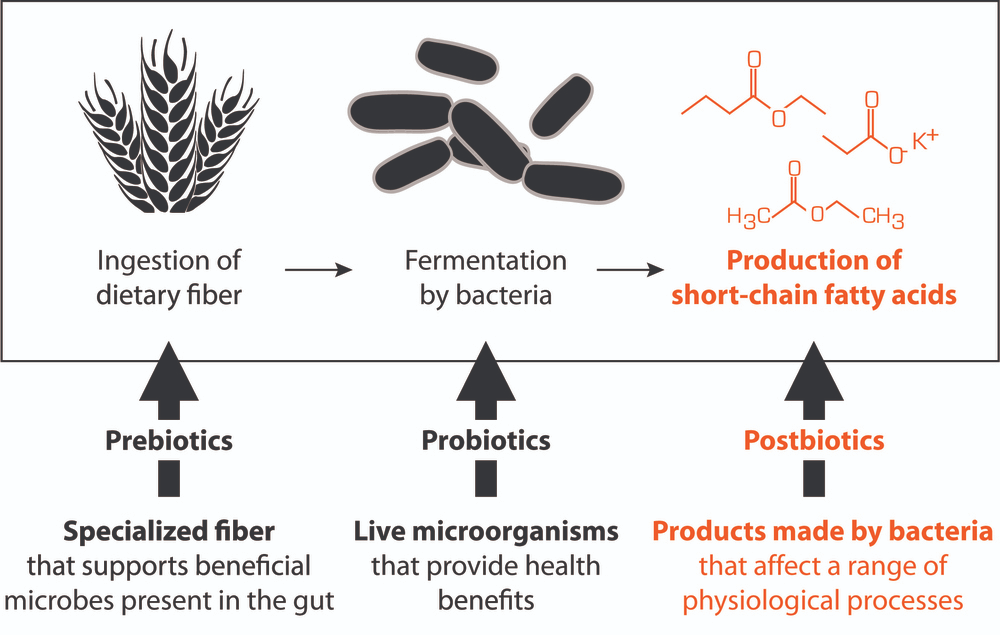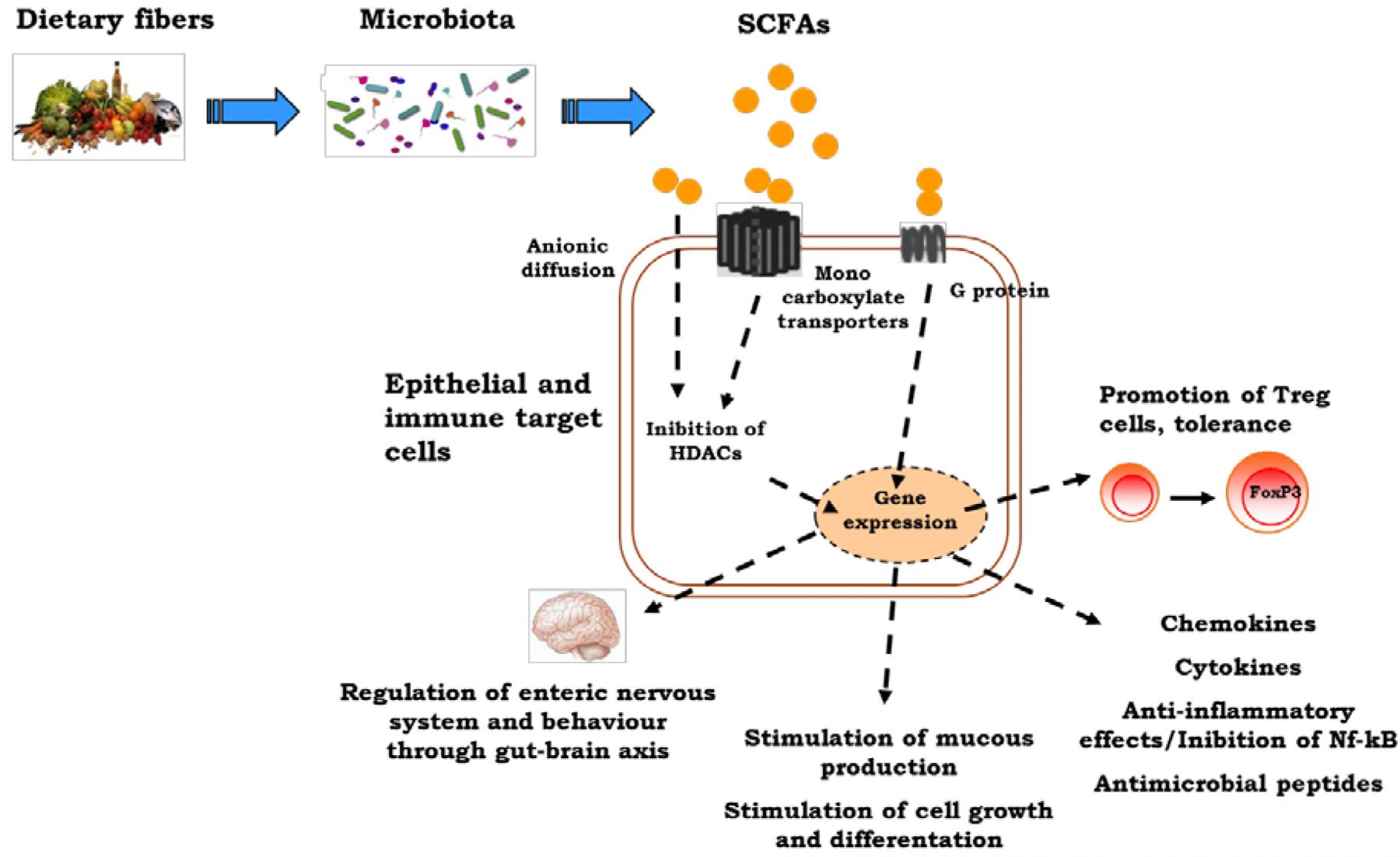Functional Foods, Nutraceuticals, Food Additives, Medicinal Foods
Regulatory aspects
A confusing array of terms for functional foods, food additives, dietary foods, medicinal foods, and food with functional aspects such as epigenetic active foods, SIRT foods, senolytic foods, and many others developed. Regionally very different definitions, concepts for safety assessment, and regulations are complicating the scientifically sound uses of the possibilities of health preservation in this area. Interests of stakeholders such as organisations claiming to protect the interests of consumers, trade, environment or industries are controversial and endless discussions such as the one on health claims, science-based criteria and guidances are exhausting. However, the trend to personalisation will direct developments.
An exciting overview on “Personalised health preservation, precision medicine, precision nutrition and innovations in functional foods” is given in this review >>>
A great summary on existing, local, quite divergent regulations and concepts is given in this paper >>>

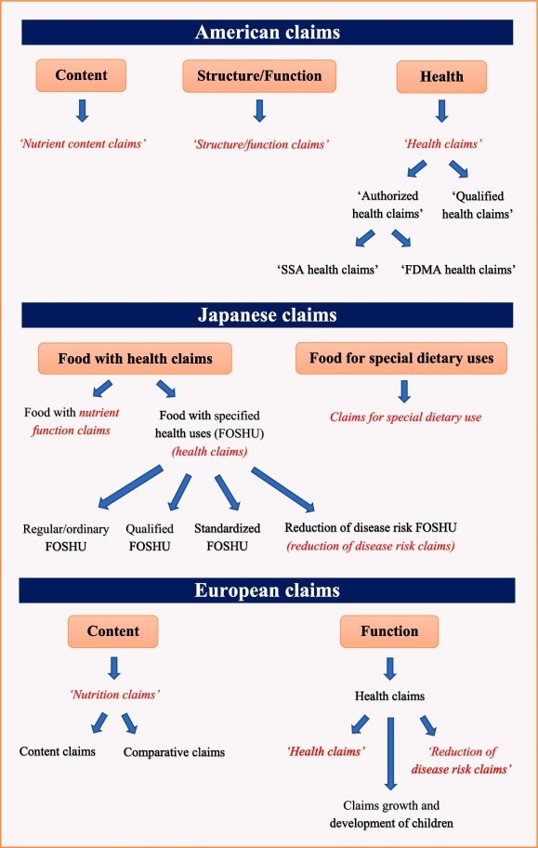
Functional foods, Ingredients of Medicinal Plants, Nutraceuticals
The primary function (nutritional value) of food is to provide us with food energy and the necessary macro and micronutrients. The realization that our food can (must) do more than just provide us with energy and macro and micronutrients has been known to mankind for millennia. They also contribute to our well-being and can influence health status and prevent illnesses (health value).
It has been known for a long time that a clear relationship exists between the food we eat and our health. The current concept of functional foods has resulted from the gradual recognition that healthy diets result from eating nutritious foods and from the identification of the mechanisms by which foods modulate metabolism and health. When we eat food, our first and most basic aim is to obtain nutrients for our body and to satisfy our metabolic needs. However, some groups of foods, in addition to their nutritional properties, present other additional properties for health. These types of foods are called functional foods and may be defined as any food that has a positive impact on an individual’s health, physical performance, or state of mind, in addition to its nutritious value. https://www.sciencedirect.com/topics/agricultural-and-biological-sciences/functional-foods
The European Food Safety Authority (EFSA) defines functional foods as: “A food, which beneficially affects one or more target functions in the body, beyond adequate nutritional effects, in a way that is relevant to either an improved state of health and well-being and/or reduction of risk of disease. A functional food can be a natural food or a food to which a component has been added or removed by technological or biotechnological means, and it must demonstrate their effects in amounts that can normally be expected to be consumed in the diet” (EC 1924/2006 on nutrition and health claims made on foods).
Experts belonging to the Functional Food Center, USA (FFC) currently define functional foods as “natural or processed foods that contain known or unknown biologically active compounds, which, in defined, effective, and non-toxic amounts, provide a clinically proven and documented health benefit utilizing specific biomarkers for the prevention, management, or treatment of chronic disease or its symptoms”. In this context, bioactive compounds, which are considered as a backbone of the functional foods, are understood as “primary and secondary metabolites of nutritive and non-nutritive natural components generating health benefits by preventing or are Functional Foods essential for “ Sustainable Health”? In the USA, the definition of Nutraceuticals includes “functional foods” – i.e. foods that provide a specific health benefit based on their ingredients. Nutraceuticals are natural, bioactive chemical compounds that have health-promoting, disease-preventing, or general medicinal properties (María Dolores del Castillo, Amaia Iriondo-DeHond, 2018).
Also, the term “sustainable health” was introduced as an objective of functional foods as: “a healthy and active aging avoiding the risk of diseases”. Healthy foods and particularly functional foods are needed to achieve this goal. Sustainable health may be accomplished by delivering high-quality care and improved public health without exhausting natural resources or causing severe ecological damage. Sustainable health can also be achieved by protecting and improving health now and for future generations using different strategies such as healthy nutrition that may be based on functional foods. Plans for minimizing the environmental impact on health and nutrition are also needed (María Dolores del Castillo, Amaia Iriondo-DeHond, 2018)
Functional foods typically include:
- Probiotics, Prebiotics, Synbiotics and postbiotics.
- Dietary fibre
- Omega 3 fatty acids, oleic acids and phytosterols
- Phytoestrogens
- Phenolic compounds
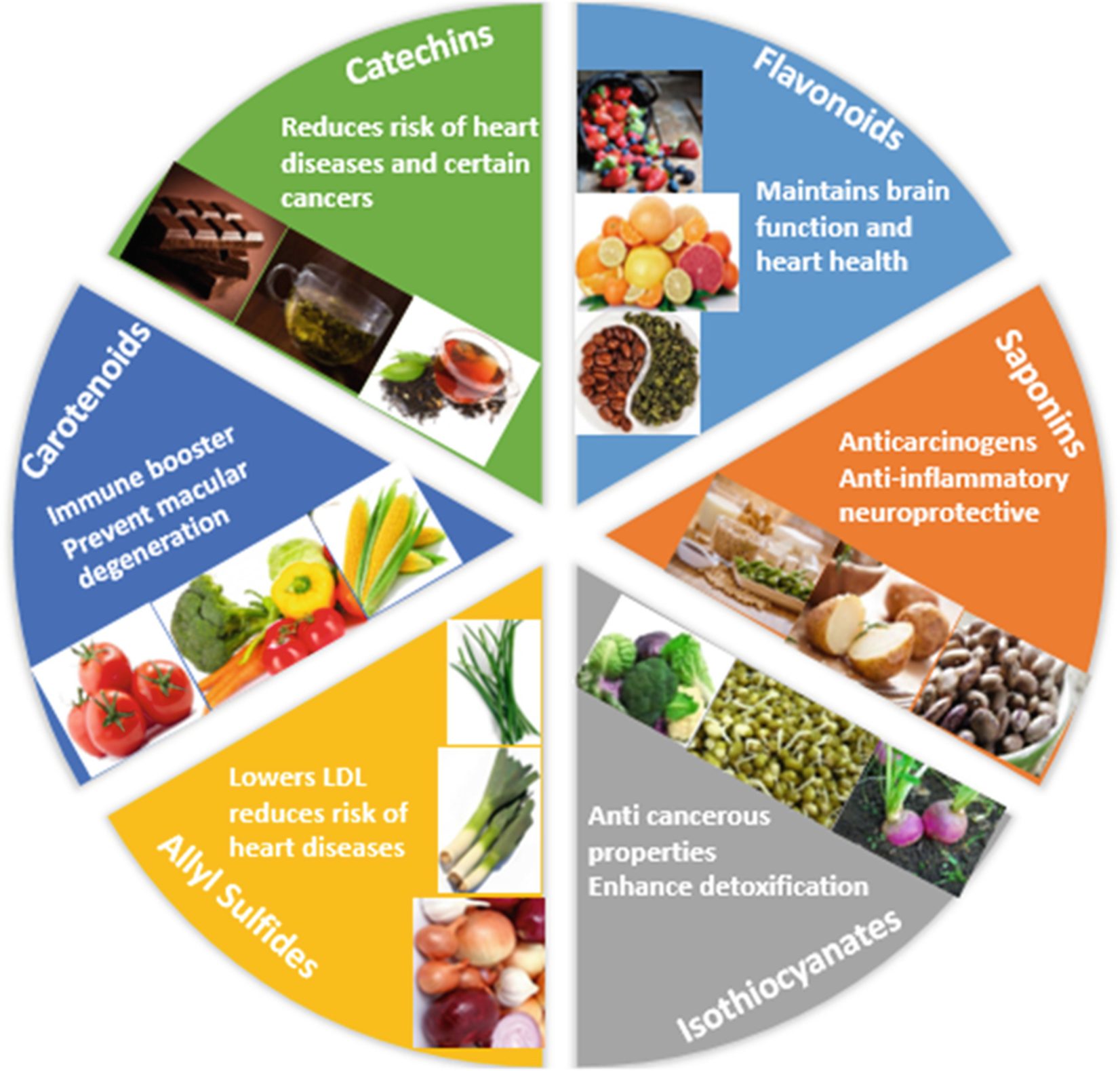
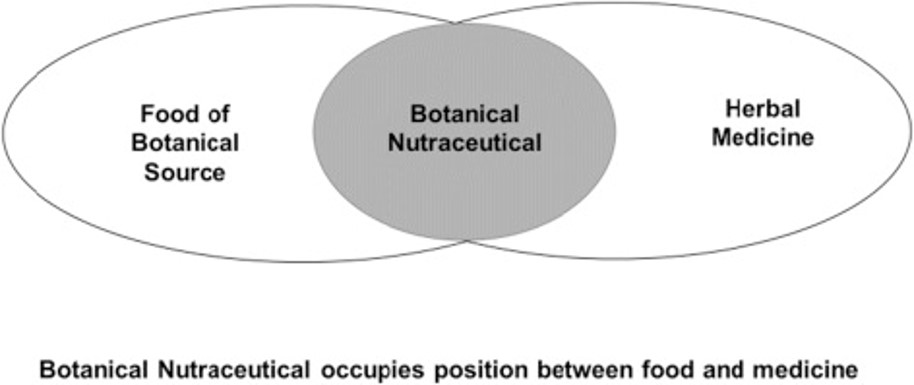
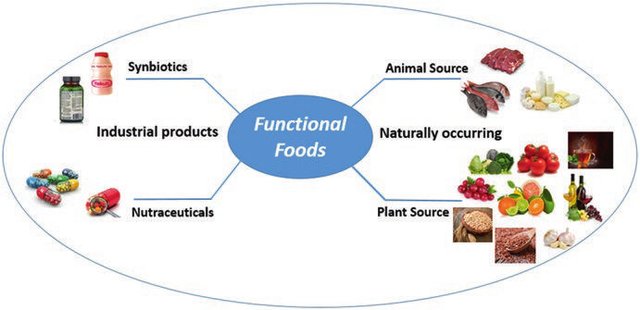
Polyphenols, a major group of nutaceuticals with strong health supporting activities
Polyphenols, organic compounds found abundantly in plants, have become an emerging field of interest in nutrition in recent decades. A growing body of research indicates that polyphenol consumption may play a vital role in health through the regulation of metabolism, weight, chronic disease, and cell proliferation. Over 8,000 polyphenols have thus far been identified, though their short- and long-term health effects have not been fully characterized .
Animal, human andepidemiologic studies show that various polyphenols have antioxidant and anti-inflammatory properties that could have preventive and/or therapeutic effects for cardiovascular disease,neuro- degenerative disorders, cancer, and obesity .
However, some have cautioned that there may be harmful effects of over- consumption, especially in cases where compounds are isolated rather than consumed in a food matrix.
Current literature suggests that the long-term consumption of diets rich in polyphenols protects against certain cancers, cardiovascular diseases, type 2 diabetes, osteoporosis, pancreatitis, gastrointestinal problems, lung damage, and neurodegenerative diseases.
The dominant explanation for these benefits is the “biochemical scavenger theory,” which posits that polyphenolic compounds negate free radicals by forming stabilized chemical complexes, thus preventing further reactions. There is also evidence of an additional mechanism by which polyphenols protect against
oxidative stress by producing hydrogen peroxide (H202), which can then help to regulate immune response actions, like cellular growth. Yet, the majority of evidence comes from in vitro models and it is unclear if these mechanisms hold true in humans.
Furthermore, recent evidence has elucidated the effect of absorption pharmacokinetics on efficacy of polyphenols as antioxidants and other potentially health-promoting mechanisms; these physiochemical properties of the molecules may explain the variable effects observed in human and animal models, as well as conflicting data in the literature.
Some harmful effects have been reported from polyphenolintake. Adverse outcomes have been documented from polyphenolic botanical extracts in beverages, especially forindividuals with degenerative disease, high blood pressure,thyroid disease, epilepsy, or heart disease.
https://www.ncbi.nlm.nih.gov/pmc/articles/PMC6160559/pdf/fnut-05-00087.pdf
https://www.researchgate.net/publication/263777475_Dietary_Polyphenols_and_Type_2_Diabetes_Current_Insights_and_Future/figures?lo=1
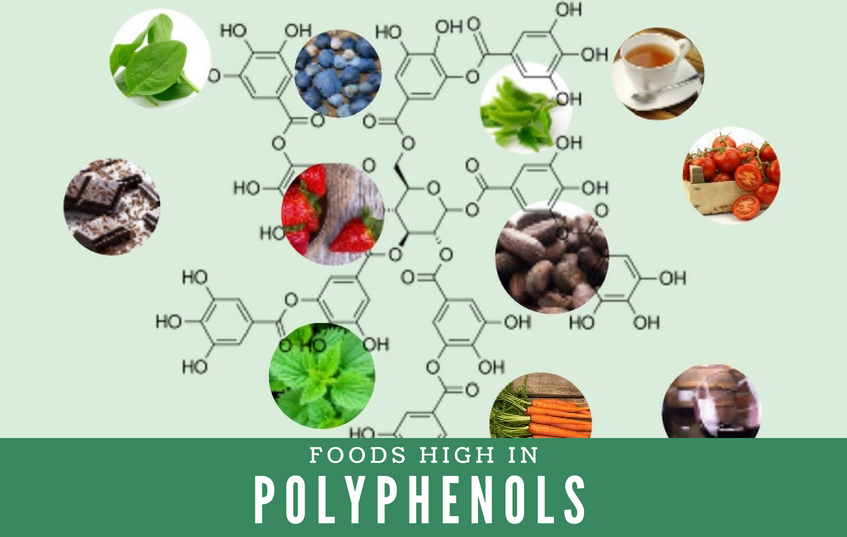
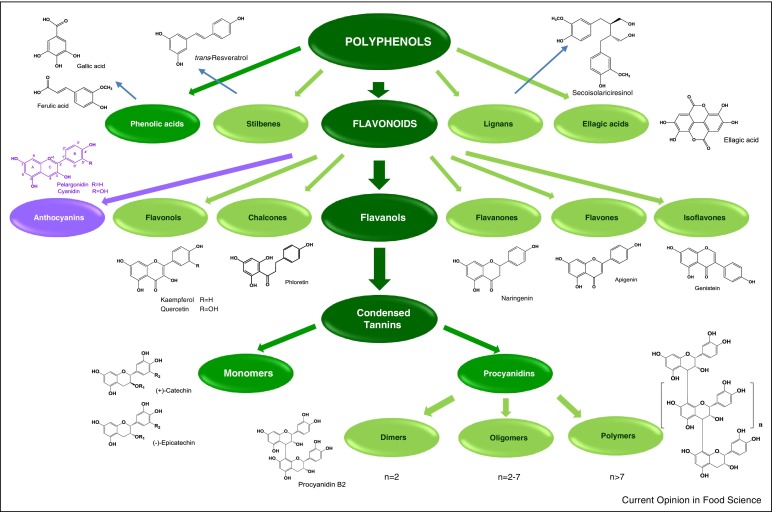
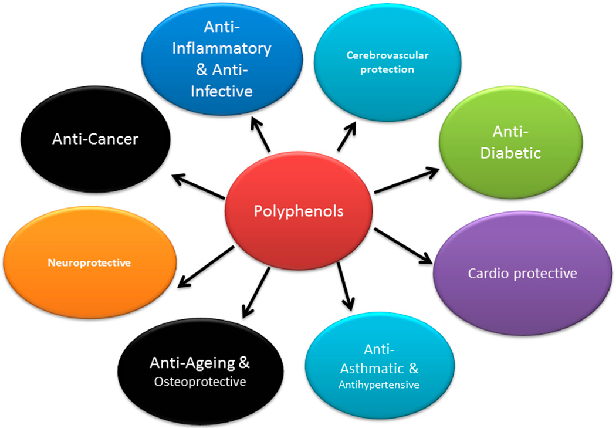
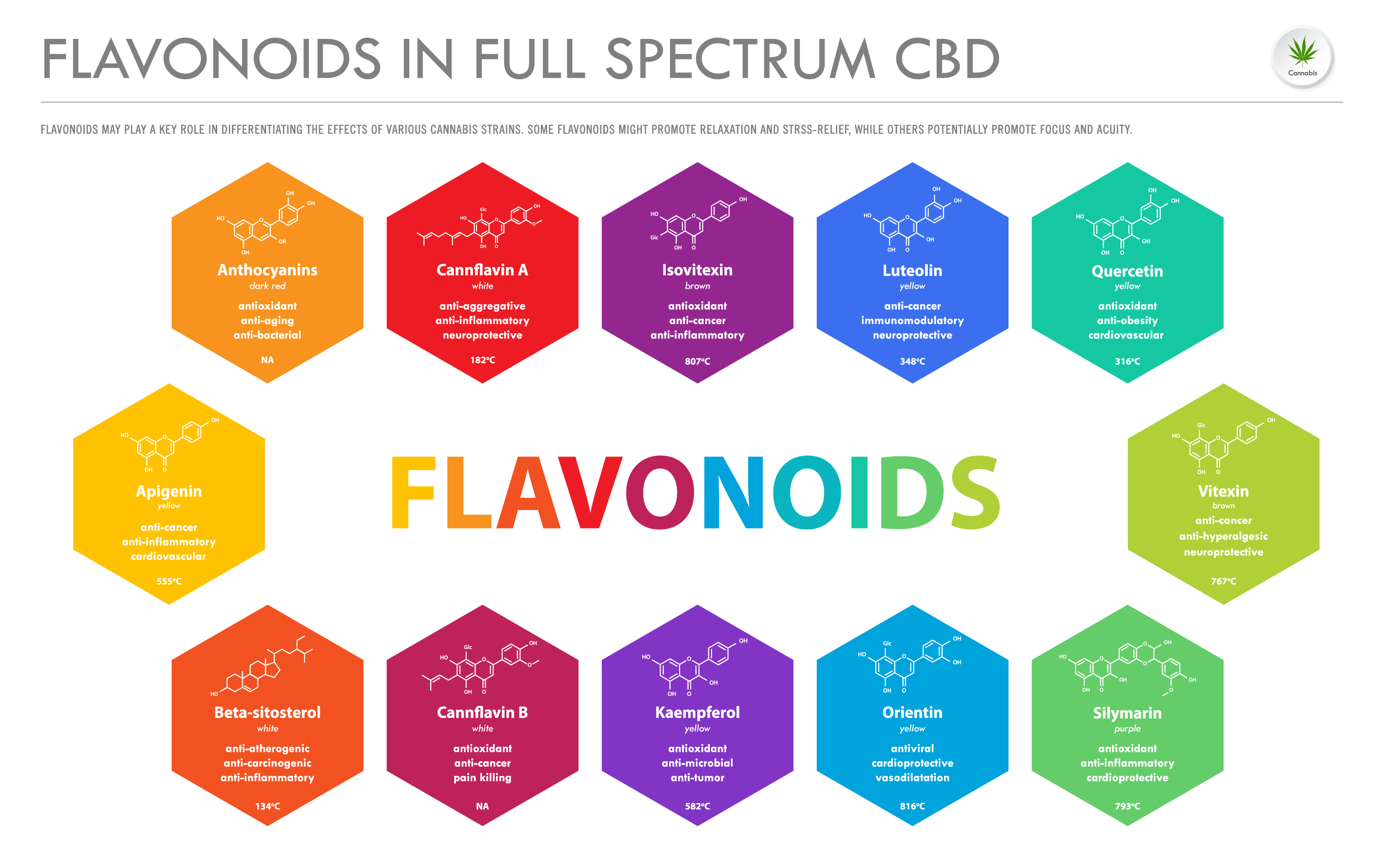
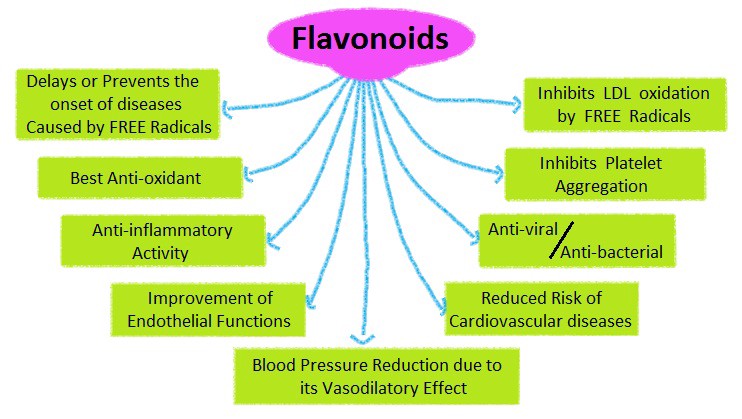
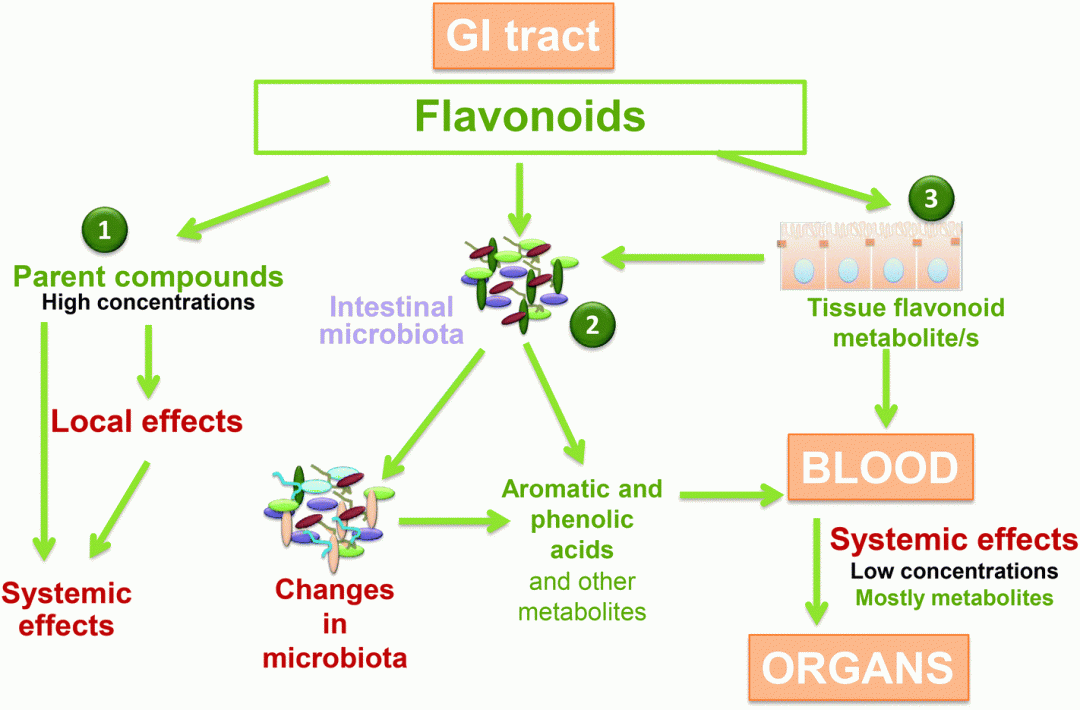
Flavonoids
Flavonoids are a diverse group of plant metabolites with over 10,000 compounds that have been identified until now.
The well recognised anti-oxidant properties of flavonoids resulted in the interest about their potential role in prevention of cardiovascular diseases . Quercetin and catechin demonstrate the greatest antioxidant properties in vitro. Recent studies clearly showed health benefits of dietary flavonoids as there was a positive association between their intake and reduction of the risk of car-diovascular death in adult Americans
Effectiveness of flavonoids in prevention of age–related neurodegenerative diseases has been much investigated in the recent years. It concerns particularly dementia, Parkinson’s and Alzheimer’s diseases. It seems that flavonoids can modulate neuronal function . Diets rich in these substances were shown to beneficially affect maintenance of human cognitive functions, probably through protection of neurons, enhancement of their function and regeneration. Reactive oxygen and nitrogen species are involved in the development of many neurodegenerative diseases, whilst dietary flavonoids have been shown to counteract effectively oxidative neuronal damage. It was demonstrated that use of the extract from the gingobiloba plant, that is rich in flavonoids, may beneficially influence treatment of the age-related dementia and Alzheimer’s disease . Tangeretin, a flavonoid that belongs to the flavone subclass, found mainly in citrus fruits, was shown to provide protection in Parkinson’s disease.
Chemoprevention is defined as the use of natural or synthetic substances to inhibit or reverse carcinogenesis . Much attention, in this respect, is focused on flavonoids . Epidemiological and clinical studies suggest that these compounds can prevent cancer through their interaction with various genes and enzymes . It seems that biologically active substances found in foodstuffs may affect such stages of carcinogenesis as initiation, promotion and progression . Many mechanisms of flavonoid action have been discovered. In the initiation and promotion stages, they include: inactivation of the carcinogen, inhibition of cell proliferation, enhancement of DNA repair processes, and reduction of oxidative stress. In the progression phase flavonoids may induce apoptosis, inhibit angiogenesis, exhibit antioxidant activity, and also cytotoxic or cytostatic action against cancer cells.
At present, consumption of dietary flavonoids is regarded as safe. However, it is of concern that the toxicity of concentrated sources of flavonoids is unknown, together with their interactions with other dietary components or taken medications. (Aleksandra Kozłowska, 2014)
Quality, Bioavailability, Stability, Mixability and Safety
are major determinants of Functional Foods
Quality, bioavailability, stability, mixability and safety of functional foods are of crucial importance. Many supplements available on multiple markets are only active shortly after extraction from plants. Unfortunately they loose their activity by poor stability such as oxydation, they have a poor formulation ore are not bioavailable.
For safety we strongly recommend to use supplements for not longer than 3-5 months and then pause or alternate to a product with different ingredients and mechanisms.
However, functional food as supplements can not replace a balanced and especially diverse diet!
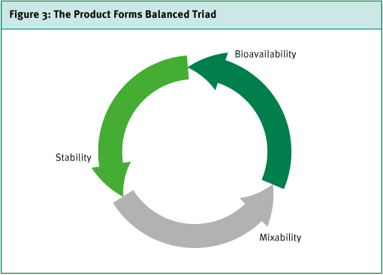
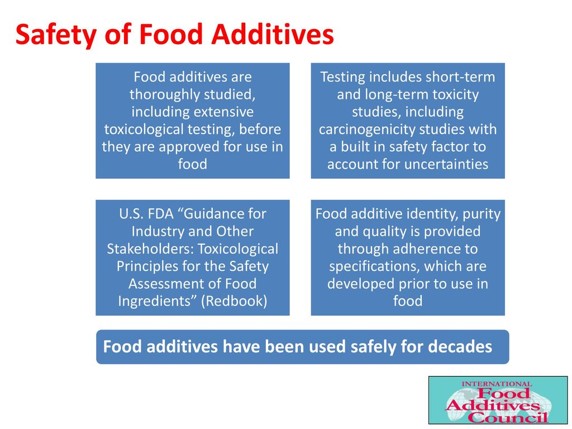
Probiotics, Prebiotics, Synbiotics and Postbiotics
are typically widely known as functional food. They address health and functions of the gut and its links to the immune system, the nervous system and the endocrine system. Thus, there is some truth that” health comes from the gut”.
Probiotics
Probiotics: Based on a 2001 Food and Agriculture Organization of the United Nations – World Health Organization (FAO-WHO) expert group consensus statement, probiotics, can be defined as ‘live microorganisms, which when administered in adequate amounts, confer a health benefit on the host’. The majority of the probiotic products contain a defined and a limited list of microbial taxa, which mostly include lactic acid bacteria (LAB) such as Lactobacillus spp. and Bifidobacterium spp., which have the status of being generally regarded as safe (GRAS). Notably, health effects of probiotics are very strain and disease-specific, as reviewed elsewhere. As such, evidence on each of them might be different and there is a tremendous amount of data on specific probiotic strains accompanied by a large diversity in study outcomes.
Ideally, probiotics should be physiologically and genetically characterized and should be able to arrive in a viable state in the gut after product processing, storage conditions and gastric passage. Additionally, the health effects should be demonstrated in human studies.
It has been suggested that probiotics can influence the gut microbiota through the suppression and inhibition of pathogens as well as preventing adhesion and establishment of these pathogens in the gut. Furthermore, probiotics may have a role in immune system development, synthesis of important nutritional elements such as vitamins, and the reinforcement of the intestinal barrier integrity through the upregulation of genes involved in tight junction signaling.
For the probiotic members of the genera Lactobacillus, Bifidobacterium and Streptococcus, immunomodulatory properties have been shown, with beneficial effects on cell-mediated immunity and inflammation. Probiotic modulation of immune development represents a promising application, particularly in young infants where the most pronounced immune-modulating effects have been documented. As such, probiotics in infant and young child nutrition have shown promising results for the management and treatment of allergies, gut and respiratory infections, irritable bowel syndrome (IBS), ulcerative colitis (UC) and infant colic.
Clinical efficacy and prophylactic effects of probiotics has also been suggested in adults for several conditions, including antibiotic-associated diarrhea, acute gastroenteritis, IBS, UC, and acute respiratory infections. Moreover, probiotic use has been associated with a variety of immunomodulatory effects.
Changes in composition and functioning of the gut microbiota as a result of probiotic use is less clear, although some studies report that probiotics induce alterations in gut microbiota composition that co-occur with health-promoting effects. However, due to a lack of experimentally demonstrated causal relationships, it is difficult to claim that such microbiome alterations are indeed beneficial.
Prebiotics
Prebiotics: The International Scientific Association of Probiotics and Prebiotics recently reviewed the definition and scope of prebiotics and produced a consensus statement on the definition of prebiotics: ‘a substrate that is selectively utilized by host microorganisms conferring a health benefit’. Prebiotics can change the microbiota composition by stimulating the growth of certain species, thereby promoting health benefits in the host. Numerous carbohydrates which are fermentable for microorganisms only have been reported to convey such prebiotic effects, including human milk oligosaccharides (HMOs), several dietary fibre types, phenolics and phytochemicals, conjugated linoleic acid and polyunsaturated fatty acids, resistant starch and a wide range of oligosaccharides, with wide ranges of health effects (Flint et al., 2012). The well-studied and most frequently used prebiotic oligosaccharides include short-chain galactooligosaccharides (scGOS) and long-chain fructooligosaccharides (lcFOS). The main effects of many of these prebiotics are based on the enhancement of the growth and activity of specific Bifidobacterium spp., where relative abundances are characteristic for breastfed infants and young children. Via this microbiota modulating effect, prebiotic oligosaccharides in infant formula are known to induce changes in gut metabolic activity and bring stool consistency and frequency closer to that of breast-fed infants. Besides effects in babies, prebiotics is associated with physiological and pathophysiological properties throughout life, including toddlers, adolescents, adults, and the elderly. These effects include, amongst others, improvement of gastrointestinal functioning and barrier function, increase in mineral absorption, modulation of energy metabolism and satiety, and reduction of the risk of intestinal infections.
Synbiotics
Synbiotics are often defined as ‘synergistic mixtures of probiotics and prebiotics that beneficially affect the host by improving the survival and colonization of live beneficial microorganisms in the gastrointestinal tract of the host’. Synbiotics can modulate the gut microbiota composition and modulate microbial metabolite production. Infant formula with added synbiotics have shown to support normal growth in infants with cow’s milk allergy, modulate the intestinal microbiota and prevent asthma-like symptoms in infants with atopic dermatitis. On top of this, it was shown that infant formulas supplemented with synbiotics containing scGOS/lcFOS and Bifidobacterium breve M-16V compensate the delayed Bifidobacterium colonization documented for C-section born infants. In C-section born infants these synbiotics modulate the production of acetate and the acidification of the gut. These observed physiological conditions, described as indicators of gut health, emulate the ones observed in vaginally born infants. With regards to adults, several meta-analyses suggest positive effects of synbiotics in constipation, on lowering of high fasting blood glucose levels and on the risk of developing postoperative sepsis after gastrointestinal surgery.
Postbiotics
Postbiotics are functional bioactive compounds, generated in a matrix during fermentation, which may be used to promote health. The term postbiotics can be regarded as an umbrella term for all synonyms and related terms of these microbial fermentation components. Therefore, postbiotics can include many different constituents including metabolites, short-chain fatty acids (SCFAs), microbial cell fractions, functional proteins, extracellular polysaccharides (EPS), cell lysates, teichoic acid, peptidoglycan-derived muropeptides, and pili-type structures. Postbiotics is also a rather new term in the ‘-biotics’ field. Where consensus exists for the definitions of pre- and probiotics, this is not yet the case for postbiotics
